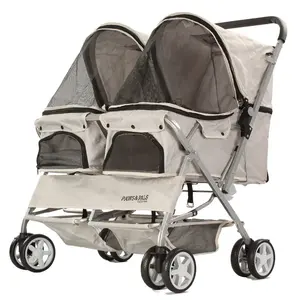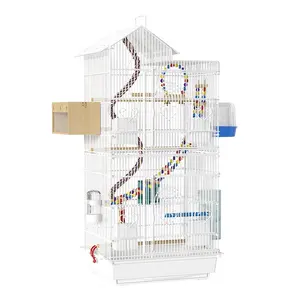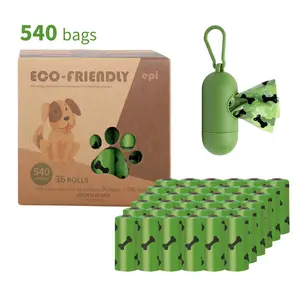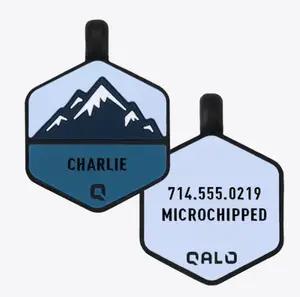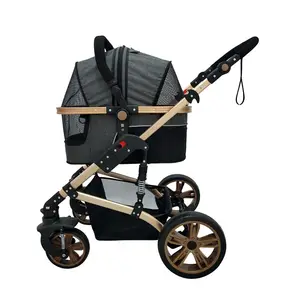Phổ biến trong ngành của bạn





CAYKEN 320 Mét-520 Mét Miter Cưa Tường Cutter Bê Tông Giá Máy Cắt
76.373.490 ₫ - 101.831.319 ₫
Đơn hàng tối thiểu: 1 Bộ


Máy Cắt Bê Tông CAYKEN 320MM Cho Tường, Đường Bê Tông Với Cưa Tròn
63.644.575 ₫ - 76.373.490 ₫
Đơn hàng tối thiểu: 1 Cái

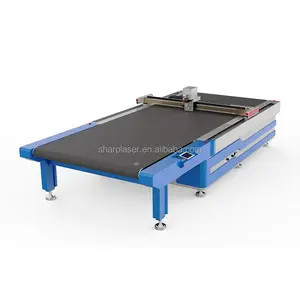





Công nghiệp tự động đa lớp vải vải may mặc Máy cắt
137.472.281 ₫ - 160.384.328 ₫
Đơn hàng tối thiểu: 1 Bộ



Best quality brick concrete wall pipe chasing cutting machine MASTER electricity 2500w
3.564.097 ₫ - 5.091.566 ₫
Đơn hàng tối thiểu: 50 Cái





Wall groove cutting wall chasing machine for 1500w 150mm wall chaser MAXTOL for brick and saw support oem
1.603.844 ₫ - 1.680.217 ₫
Đơn hàng tối thiểu: 200 Cái






M1y oc01 150 china manufacture 1700w stone brick concrete wall chasing cutting grooving machine circular saw
1.005.585 ₫ - 1.145.603 ₫
Đơn hàng tối thiểu: 300 Cái






Rãnh Máy 220V 1pc1100w 25Mm/35Mm Công Nghiệp Tường Đuổi Theo Máy Tường Rãnh Máy Cắt
Sẵn sàng vận chuyển
4.200.542 ₫ - 4.709.699 ₫
Đơn hàng tối thiểu: 1 Bộ
Vận chuyển mỗi chiếc: 1.303.696 ₫





Chất lượng tốt nhất gạch bê tông tường Ống Chasing Máy cắt
146.382.521 ₫ - 238.030.708 ₫
Đơn hàng tối thiểu: 1 Bộ






Hualong Xách Tay Tường Chase Electric Saw Cho Đá Kim Loại Và Gỗ Cắt 1280W 110Mm Kim Cương Đá Cẩm Thạch Cutter
814.651 ₫ - 980.127 ₫
Đơn hàng tối thiểu: 1 Bộ






Máy Cắt Đuổi Không Chổi Than AC Hạng Nặng Dụng Cụ Điện Máy Cắt Đá Rãnh Tường 3200 W
1.527.470 ₫ - 1.731.133 ₫
Đơn hàng tối thiểu: 6 Cái






POWERTEC Cưa Điện Đuổi Theo Tường Di Động 110Mm Cho Máy Cắt Đá Cẩm Thạch Cắt Đá Kim Loại Và Gỗ
318.223 ₫ - 381.868 ₫
Đơn hàng tối thiểu: 500 Cái






Máy cưa điện 110mm Bê Tông Di động cắt đá cẩm thạch cho đá kim loại và cắt gỗ
Sẵn sàng vận chuyển
432.784 ₫ - 763.735 ₫
Đơn hàng tối thiểu: 2 Cái
Vận chuyển mỗi chiếc: 651.976 ₫






Công Nghiệp Laser 40Mm Tường Máy Cắt Không Bụi Chaser Điện 2700W Gạch Bê Tông Máy Cắt Tường Chasing Máy
2.036.627 ₫ - 2.189.374 ₫
Đơn hàng tối thiểu: 10 Cái




Doanh Số Hàng Đầu Công Cụ Cắt Đuổi Theo 220V 1650W 150Mm
509.157 ₫ - 2.545.783 ₫
Đơn hàng tối thiểu: 500 Cái






Điện bê tông tường chasers khía Máy rãnh cắt công cụ công cụ điện 10cm với chân không
962.306 ₫ - 980.127 ₫
Đơn hàng tối thiểu: 500 Cái

Coofix Máy Đuổi Bê Tông Gắn Tường Thợ Điện Công Nghiệp Cao Cấp Máy Cắt Tường Máy Đuổi Không Bụi Chạy Điện 3800/4000W
2.214.832 ₫ - 2.240.290 ₫
Đơn hàng tối thiểu: 200 Cái
Vận chuyển mỗi chiếc: 1.328.645 ₫






Máy Đuổi Theo Lớp Lót Gắn Tường Máy Mài Hai Lớp Cắt Rãnh Rãnh Rãnh Einhell 1320W Mauernutfrase
1.221.976 ₫ - 1.247.434 ₫
Đơn hàng tối thiểu: 504 Cái





Brick concrete wall chasing grooving machine cutting MASTER patent product mt wg2 electricity
3.564.097 ₫ - 5.091.566 ₫
Đơn hàng tối thiểu: 50 Cái





Hualong Xách Tay Tường Chase Electric Saw Cho Đá Kim Loại Và Gỗ Cắt 1280W 110Mm Kim Cương Đá Cẩm Thạch Cutter
814.651 ₫ - 980.127 ₫
Đơn hàng tối thiểu: 1 Bộ






6500W 133mm bê tông tường rãnh máy cắt/tường Chaser khía Máy tường Chaser thấy máy cắt bê tông
4.786.072 ₫ - 4.913.362 ₫
Đơn hàng tối thiểu: 2 Cái






220V 150 mét bánh xe Bộ chuyển đổi đĩa máy xay điện bê tông tường Chaser đường ống dẫn nước máy cắt đứng cắt đuổi theo với nước
962.306 ₫ - 980.127 ₫
Đơn hàng tối thiểu: 500 Cái





Hualong Xách Tay Tường Chase Electric Saw Cho Đá Kim Loại Và Gỗ Cắt 1280W 110Mm Kim Cương Đá Cẩm Thạch Cutter
814.651 ₫ - 980.127 ₫
Đơn hàng tối thiểu: 1 Bộ






Công nghiệp hướng dẫn sử dụng công cụ cắt tường Chaser slotter rãnh máy cắt bê tông nhiệm vụ nặng nề với bụi khai thác
962.306 ₫ - 980.127 ₫
Đơn hàng tối thiểu: 500 Cái






Reel Tự Dính Máy Cắt Nhãn Hiệu In Ấn Vật Liệu Điện Mắt Đuổi Theo Màu Máy Cắt Với Cán Chức Năng
25.457.830 ₫
Đơn hàng tối thiểu: 1 Bộ
Vận chuyển mỗi chiếc: 158.474.990 ₫






QK-400 tự động vi tính màu mắt đuổi theo cuộn để cắt giấy máy cắt với dao rạch
22.148.312 ₫ - 24.184.939 ₫
Đơn hàng tối thiểu: 1 Bộ






Máy Cắt Và Đục Lỗ Bằng Khí Nén, Màng Nhựa Tốc Độ Cao, Nhãn Tự Dính, Máy Cắt Định Vị Tròn
66.190.358 ₫
Đơn hàng tối thiểu: 1 Bộ





Phim nhựa hình đặc biệt đấm và máy cắt cuộn vải kraft giấy hình chữ nhật đấm và cắt
66.190.358 ₫
Đơn hàng tối thiểu: 1 Bộ






WJ hoàn toàn tự động nhiệt giấy rạch máy đuổi theo đăng ký giấy cuộn tua máy Tước Rewinder coreless
178.204.808 ₫ - 305.493.957 ₫
Đơn hàng tối thiểu: 1 Bộ






QK-800S tốc độ cao Jumbo nhựa giấy PVC cuộn để tấm máy cắt với màu mắt đuổi
80.192.164 ₫ - 82.737.947 ₫
Đơn hàng tối thiểu: 1 Bộ






Không khí hút đuổi màu đồng bộ hóa không dệt vải Máy cắt tự dính Máy cắt giấy Pet phim Slicer
53.206.865 ₫
Đơn hàng tối thiểu: 1 Bộ





QK-200Z Giấy Đuổi Màu Tự Động Cuộn Màng Kim Loại Vải PET PVC Giá Máy Cắt
25.966.987 ₫ - 27.494.457 ₫
Đơn hàng tối thiểu: 1 Bộ






Không khí hút đuổi màu đồng bộ hóa không dệt vải Máy cắt tự dính Máy cắt giấy Pet phim Slicer
53.206.865 ₫
Đơn hàng tối thiểu: 5 Bộ






Máy Rãnh Máy Đuổi Theo Tường Công Nghiệp 220V 1PC1100W 25MM/35MM Máy Cắt Rãnh Tường
3.462.265 ₫ - 4.047.795 ₫
Đơn hàng tối thiểu: 1 Cái






Máy Cắt Màu Đồng Bộ (Bảng Hấp Phụ) Máy Cắt Giấy Nhãn Hiệu Màng Pvc Tự Động
53.232.322 ₫
Đơn hàng tối thiểu: 1 Bộ






Máy Đuổi Tường 510Mm Cho Máy Đuổi Theo Rãnh Cắt Tường 3000W
5.549.807 ₫ - 5.728.012 ₫
Đơn hàng tối thiểu: 2 Cái






1600W điện di động tường Chaser tường đuổi theo Máy cắt rãnh
1.349.265 ₫ - 1.400.181 ₫
Đơn hàng tối thiểu: 10 Cái






Chuyên Bán Buôn Điện 360 Rãnh Điện Rãnh Thép Công Cụ Tay Máy Cắt 25Mm Duy Nhất Đôi Tường Lưỡi Đuổi Theo
Sẵn sàng vận chuyển
1.883.880 ₫
Đơn hàng tối thiểu: 5 Túi
Vận chuyển mỗi chiếc: 269.853 ₫






Sc-350 Vulcan Máy Cắt Tấm Phim Nhãn Tự Động Đuổi Màu
113.287.343 ₫ - 162.293.665 ₫
Đơn hàng tối thiểu: 1 Bộ
Các danh mục hàng đầu
Giới thiệu về đuổi theo máy cắt
Alibaba.com cung cấp các sản phẩm 299 đuổi theo máy cắt. Có rất nhiều đuổi theo máy cắt lựa chọn dành cho bạn, chẳng hạn như chống-trượt, 2-đột quỵ, và xi lanh đơn. Bạn cũng có thể chọn từ oem, odm, và obm đuổi theo máy cắt. Cũng như từ công nghiệp, tự làm đuổi theo máy cắt.Và bất kể đuổi theo máy cắt là các kỹ sư có sẵn để phục vụ máy móc ở nước ngoài.
